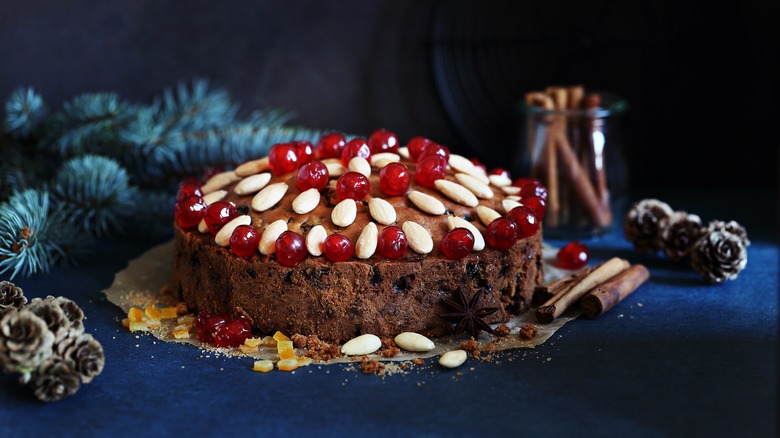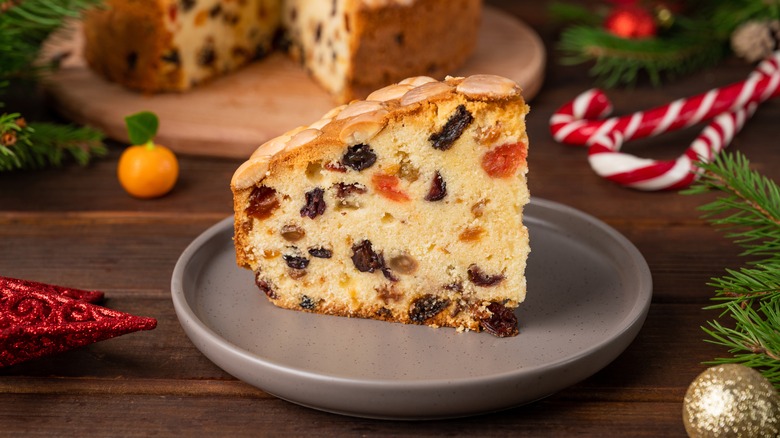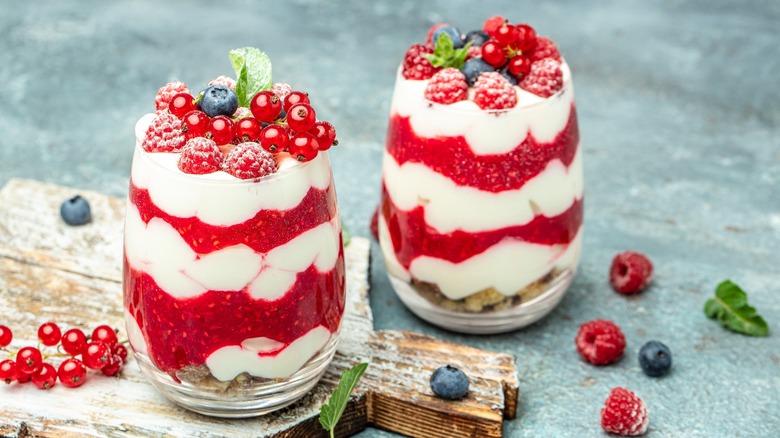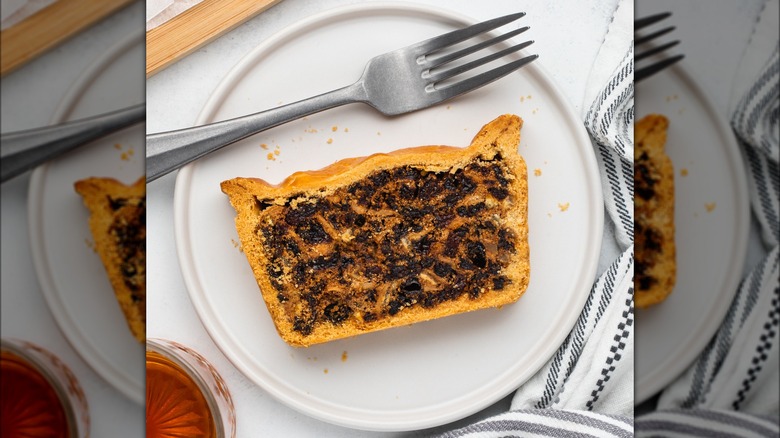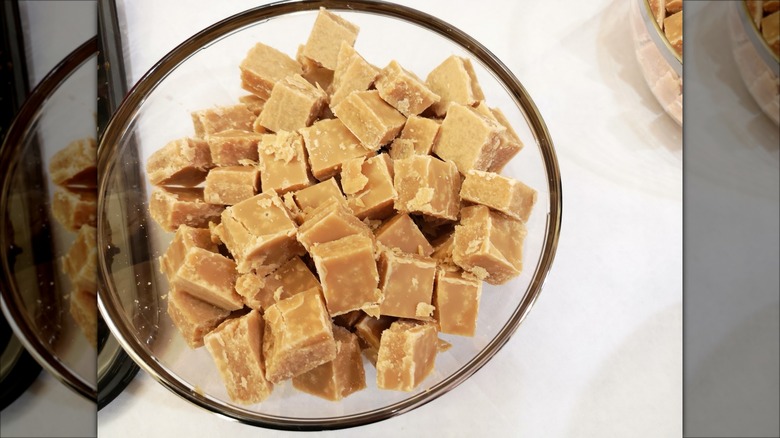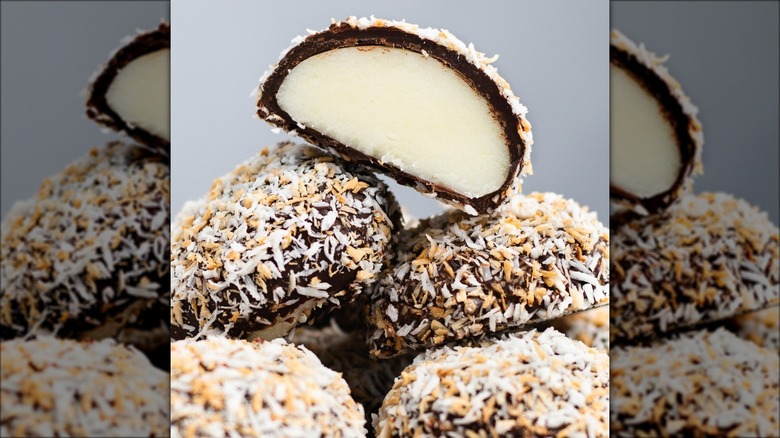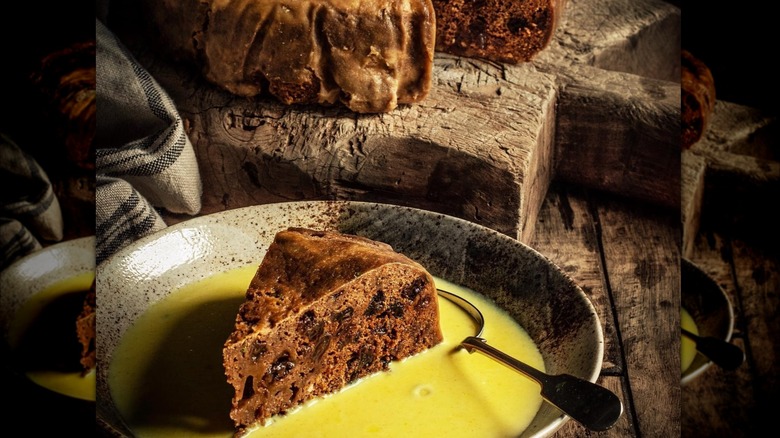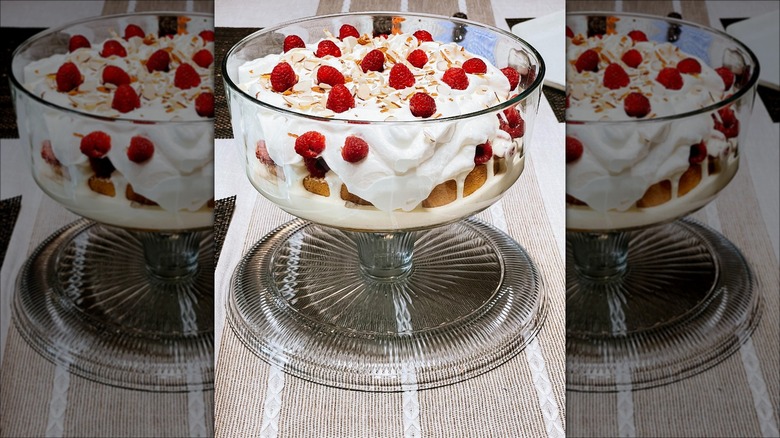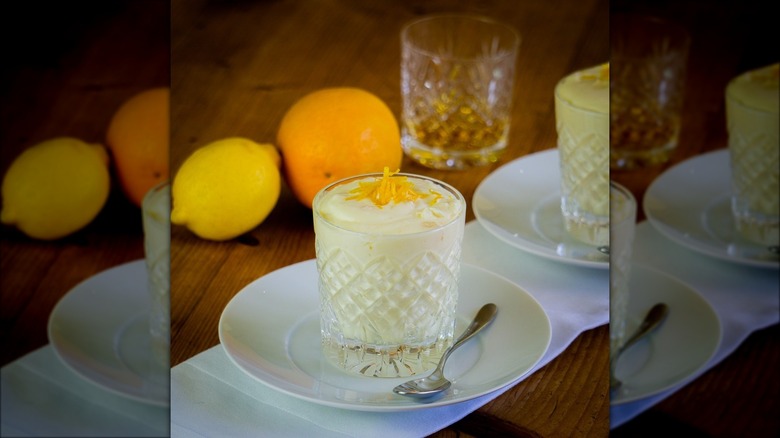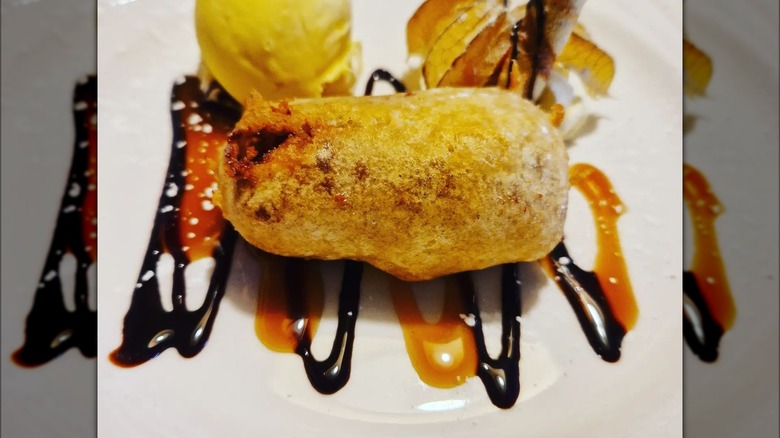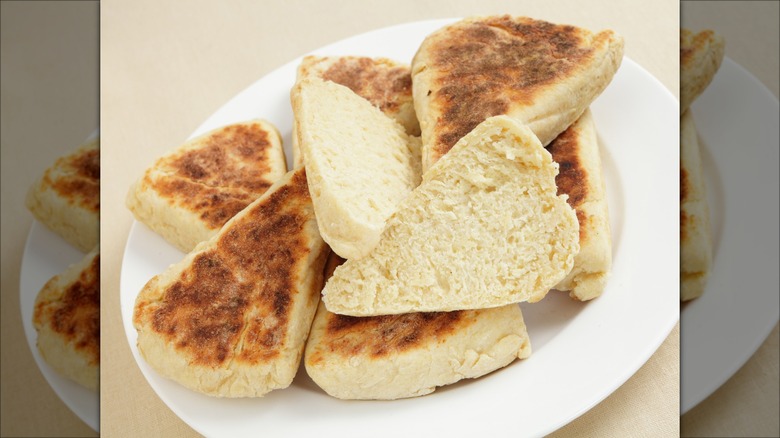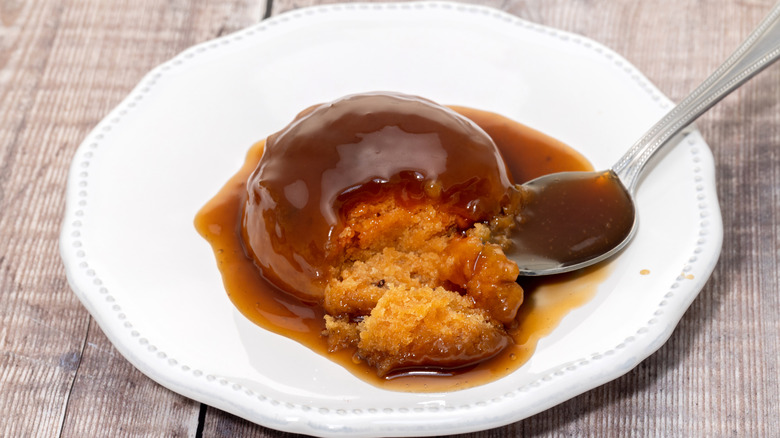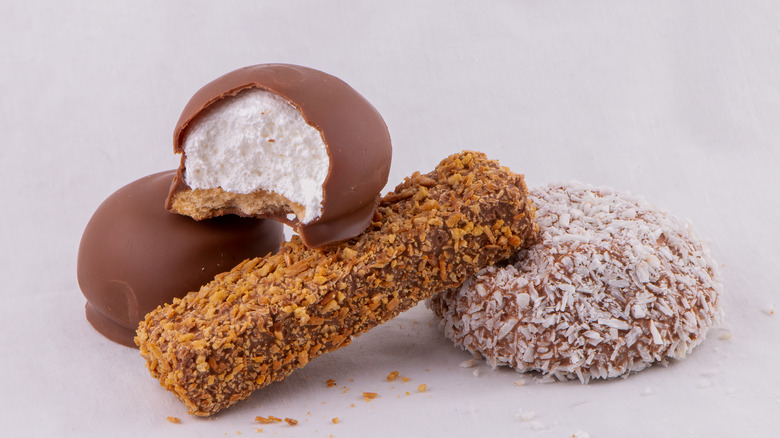12 Scottish Desserts You Need To Try At Least Once
Scottish cuisine is a delightful blend of flavors that tells a story of Scotland's history, nature, and lively culture. The country is known for certain staples, such as haggis or stovies, but their cuisine goes far beyond stomach, meat, and potatoes. For instance, their desserts extend from classic shortbread to more interesting dishes like a tipsy laird. Scottish desserts are a must-try when it comes to satisfying your sweet tooth. They are a true highlight of the country's food scene that celebrates their love for all things sweet, often featuring staple ingredients like oats, berries, dairy, and rich butter.
From the comforting warmth of a black bun to the indulgence of creamy cranachan, these desserts are more than just food; they're a taste of Scottish tradition and history. If you're lucky enough to try them in your own town or while traveling abroad, these sweet treats are a way to connect with the heart of the culture and savor the simple yet rich flavors that make Scotland unique. Here, we've gathered some popular Scottish desserts that you should absolutely aim to try in your lifetime.
1. Dundee cake
While it's often enjoyed around Christmas, this fruitcake is not necessarily considered a holiday cake. Since the 1800s, Dundee cake has been connected to the city of Dundee. Some say this fruit cake came about even earlier, by order of Mary Queen of Scots. Although this folklore is difficult to truly confirm, Dundee cake's origins were officially protected by the Department for Environment, Food and Rural Affairs in London. Indeed, the Keiller family in Dundee, who were known for making marmalades, created the traditional dessert recipe. However, it is believed to have been a favorite sweet treat of Queen Elizabeth II and Winston Churchill by the time it gained popularity in 19th-century Great Britain.
Traditionally, a Dundee cake is made with an assortment of dried fruit like currants, raisins, and sultanas; both ground and whole almonds for the batter and the decoration, respectively; and oftentimes candied peels or Seville orange marmalade. Before being distributed through the cake, the dried fruit is usually soaked in brandy or whisky. Its texture is dense and somewhat crumbly, largely because of the ground almonds in the batter. Beyond its specific fruity and nutty ingredients, what really sets this cake apart is its distinct, concentric pattern of whole, blanched almonds decorating the top.
2. Cranachan
At its core, cranachan is innate to Scotland's cultural identity and is often enjoyed during the annual Burns Night supper. While it seems simple, cranachan is a blend of rich, creamy, and fruity flavors that have become a staple in Scotland. As Gastro Obscura explains, it all started with "cream crowdie," a simple breakfast made of oats and heather honey from the Scottish moorlands blended with soft cheese. Then came the addition of raspberries, and then came the addition of whisky. Eventually, cream crowdies evolved into a dessert with raspberries, cream or crowdie if you can get a hold of it, honey, toasted oats, and often whisky — called cranachan.
At its heart are the raspberries, and that's what truly separates it from its humble inspiration. The raspberries can be mashed lightly or left whole, but they're always layered throughout the dessert. At a glance, cranachan resembles a simple trifle, but it's layered with Scottish culture and tradition. Usually, it's two layers of fresh raspberries and two layers of cream or crowdie, ending with cream on the top. Then, toasted oats soaked in whisky and honey are crumbled on top.
3. Black bun
Yet another fruit cake steeped in Scottish heritage, black buns are a distinctive and unique dessert. Traditionally, a black bun is enjoyed during Hogmanay or New Year celebrations. However, some of the first accounts of this Scottish dessert were from Robert Louis Stevenson's book, "Picturesque Notes on Edinburgh." As The Scotsman Food and Drink explains the origins, the black bun was detailed in Stevenson's own words as a "currant-loaf," "a dense, black substance, inimical to life." Sure enough, a black bun is a dense fruitcake that gets its dark coloring from currants, raisins, and black treacle.
Today, the recipe varies, with some leaving out the thick, black treacle, but the spices almost always remain the same: allspice, ginger, and cinnamon. Despite being known as a fruitcake, bun is an accurate name because this dessert is made from dough. After kneading it and spreading it thin enough to layer in a pan, you fill the pan with the fruit mixture before putting the top layer of dough over the entire thing. The end result is a dense, doughy, fruit-filled, bread-like cake that is perfectly spiced.
4. Scottish tablets
A mix between fudge and soft caramel, Scottish tablets are a melt-in-your-mouth dessert that is delicious, whether homemade or store-bought. The first tablets were made with only cream and sugar back in the 18th century. Since then, the cream has been used less often because it easily burns, with butter and condensed or regular milk taking its place. Many other countries have their own take on the concept of a tablet, from New Zealand's Russian fudge, which uses golden syrup, to sucre à la creme in Quebec, which uses brown sugar and maple syrup. Some variations also add whisky, vanilla, or nuts.
Consistent stirring is one of the most important parts of the process of making tablets. After melting the butter, sugar, and milk all together, by using the microwave or the stovetop, you transfer the mixture into a pot with condensed milk. If you choose to melt it on the stove, make sure to use low heat so it doesn't burn — this is also where the stirring starts. Otherwise, once the mixture is in the pot, you need to keep stirring, typically with a wooden spoon, as everything comes to a boil. Then, you keep stirring and simmering until it starts to thicken, and then it's poured into a dish so it can set into a creamy, indulgent, fudge-like candy bar.
5. Scottish macaroons
Macaroons aren't anything out of the ordinary, but in Scotland, the ingredients are what make them so unique. Instead of the coconut cookie that you may be used to, Scottish macaroons are made with potatoes. However, the coconut aspect isn't entirely gone — it has just moved to the outside of the dessert along with chocolate. Somehow, Scotland knew this would be a crave-worthy combination because this dessert has since become a Christmas classic and a staple dessert in Scotland.
To make these macaroons, it's fairly simple. Only four ingredients are needed: potatoes, dark chocolate for melting, coconut flakes, and powdered sugar. You'll want to mash potatoes fresh for this one and not use leftovers filled with butter and seasonings. Instead, you'll mix powdered sugar with the mashed potatoes until you get a fondant you can easily shape. After completely cooling the potatoes, you can mold them into whatever shape you want. Some opt for rectangles, others go for flattened rounds, and you'll even see them spherical-shaped. Then, coat them in melted chocolate and finish them off with coconut flakes before letting them chill.
6. Clootie dumpling
In Scotland, clootie dumplings are a classic dessert at Christmastime. Clootie dumplings have been around for 300 or more years, and all started around the time when cloots or cloths were used for cooking in Scottish cuisine. In this case, the dumpling is boiled in a cloth and gets its dense, round shape because of the unique method. Today, a cloth is still typically used to perfect the method of the steamed dessert. While thinking about steaming a bread-based, fruit-filled dumpling in a little cloth pouch might seem tedious, it's a very traditional way to cook.
Despite this dessert's name, clootie dumplings are actually a traditional Scottish pudding — some consider it like a lighter version of a Christmas pud – filled with assorted fruit. While fruit is a necessity for these steamed puddings, the kind varies. Some popular fillings include raisins, sultanas, dates, apples, and pears. Aside from the dried fruit, clootie dumplings are also made with oats, suet, and aromatic spices. Back in the day, the pudding was filled with little trinkets or surprises, such as coins, symbolic charms, buttons, or thimbles.
7. Tipsy laird
Turns out, a tipsy laird isn't just a Scottish nobleman who has had a few drinks — it's also a dessert. In Scottish tradition, this decadent treat is often enjoyed on Burns Night supper, Christmas, or Hogmanay, but if you ask us, it seems like a dessert to enjoy year-round. A trifle in design, a tipsy laird is made with layers of fresh raspberries and raspberry jam, whipped cream, custard, and ladyfingers soaked in whisky. Sometimes, Drambuie — a brand of Scotch whisky infused with heather honey — is used. Like any other trifle, it comes down to making each component and assembling it all with finesse. A typical tipsy laird is usually prepared in a large trifle bowl and can serve at least four people.
It's not entirely unlike a traditional English trifle, which is made similarly with layers of liquor-soaked cake, smooth custard, jam, and whipped cream. Somehow, the Scottish version is different than the polite, teatime trifle in England — perhaps it's the heather honey-infused whisky or the celebratory nature of the dish. So, while it likely derived from a traditional trifle, a tipsy laird evokes Scotland's culture and fondness for celebrations with its overall indulgence. It's the epitome of Scottish sweet treats: Humble, bright ingredients that come together to make something mouthwatering and spirited.
8. Caledonian Cream
Somewhat reminiscent of cranachan, this dessert is made with whisky and whipped cream. Caledonian cream dates back to at least 1829, with a recipe calling for orange marmalade, brandy, lemon juice, and pounded loaf sugar. They also have mention of a recipe from 1985, which calls for cream cheese and Seville orange marmalade. Of the two, the latter closer resembles what is enjoyed today.
A classic Caledonian cream is made by whipping cream into peaks and gently folding in a combination of orange marmalade, whisky, lemon or orange juice, and sugar. This creates a loose and airy texture, almost like mousse, but not nearly as thick and rich. When cream cheese is in substitution or alongside the whipped cream, it becomes more like an infused cheesecake. While oranges are the traditional choice of fruit, berries are also common. The important thing to remember, as with most Scottish recipes, is the cream and the whisky.
9. Deep-fried Mars bar
This iconic and well-loved Scottish dessert is exactly what it sounds like — a Mars chocolate bar battered and deep-fried to golden, melty goodness. Although Mars bars are common across the globe, Deep-fried Mars bars are innate to Scotland. Its origins are much more modern than most Scottish desserts, but it's still found its place as the country's favorite. The idea started back in 1995 when the two owners of The Carron Fish Bar, previously The Haven Chip Bar, in Stonehaven, Scotland, were experimenting. As the story goes, a customer asked them to try deep-frying the chocolate bar, and when it worked, it almost instantly became a hot commodity. We get it — delicious chocolate, a fish-fryer, and batter ready to go. As state fairs have proven for years, there is something tempting about deep-frying sweets.
Sooner than not, the dessert lost its allure because of its unhealthiness. BBC reported in 2015 that the Aberdeenshire Council demanded The Carron Fish Bar owners take down their sign boasting the ownership of the dessert because it portrays an unhealthy image. According to another report by the BBC, even Mars Corporation spoke out about not endorsing the dessert for the same health-related concerns a few years earlier.
10. Scottish scones
Scones are fairly well-known around the world, especially throughout America and Europe, but some claim they first came out of 16th-century Scotland. Scottish Scran notes the link between scones and "bannocks," a quick bread made of oats that are circular-shaped and cut into four portions, taking on the appearance of a scone. The outlet also explains the dessert's connection to Scotland's infamous poet, Robert Burns. In Scotland, you may not get them at teatime, although they do pair perfectly with it, but you're definitely apt to see them during Burns Night supper. Despite being the perfect base for a dessert and being sweet, there are savory variations, like cheese and haggis.
In actuality, Scottish-style scones are about as common as any other scone. They're delicious with jam, clotted cream, or honey — all common staples in Scotland. If you eat a European scone, they'll all be pretty much the same. The dough is made of only a few simple ingredients that come together to make a flaky yet tender bread that is almost pastry-like. It's American scones that are more akin to biscuits despite being made with similar key ingredients.
11. Sticky toffee pudding
Even though sticky toffee pudding has long been popular throughout England, many believe that it very likely originated in Cumbria, which borders Scotland. Because of its closeness, Scotland has readily accepted this dessert into its cuisine. Long ago, shipments of certain goods were smuggled into the ports between England, Ireland, Scotland, and the Isle of Man. One of the main goods brought in was sugar. Along with the readily available dates, this is possibly how sticky toffee pudding got its start. Despite its extreme popularity in Cumbria, the origins of this dessert are still debated throughout Britain and even Canada.
Nevertheless, the Scots have easily adopted the dessert wherever it came from. It helps that the recipe has modest ingredients, the crux of Scottish cuisine. It's important to remember that pudding is synonymous with dessert in Britain. In the case of sticky toffee pudding, it does happen to resemble most puds — a cake that's moist, dense, and filled with fruit. Basic recipes for sticky toffee pudding call for cream, butter, sugar, and corn syrup for the toffee, while the simple cake batter calls for dates. In true Scottish tradition, many recipes in the country add whisky to the mix.
12. Tunnock's tea cake
The brand Tunnock's was founded in Scotland back in 1890 and is famed for an assortment of treats, from caramel wafers to the Snowball, but Tunnock's tea cakes are among the favorites. It was even featured as part of the competition in one of the newer seasons of The Great British Baking Show. The little cake was created in 1956 and is now sold internationally in bulk quantities. Tunnock's infamous treat is made with a biscuit base topped with a mound of soft marshmallow and covered in dark or milk chocolate.
To make these at home, you may need a little more skill than is required for most of these desserts — mainly because of the marshmallow. Making soft marshmallows by hand isn't the easiest process, but it's achievable. It requires egg whites, corn syrup or golden syrup, vanilla, and sugar. After mastering the soft marshmallow, it's all about making the sturdy biscuit base — you'll want a nice snap with no soggy bottom — and coating it in melted chocolate. You can always order these delectable cakes online if you aren't up for the challenge.
